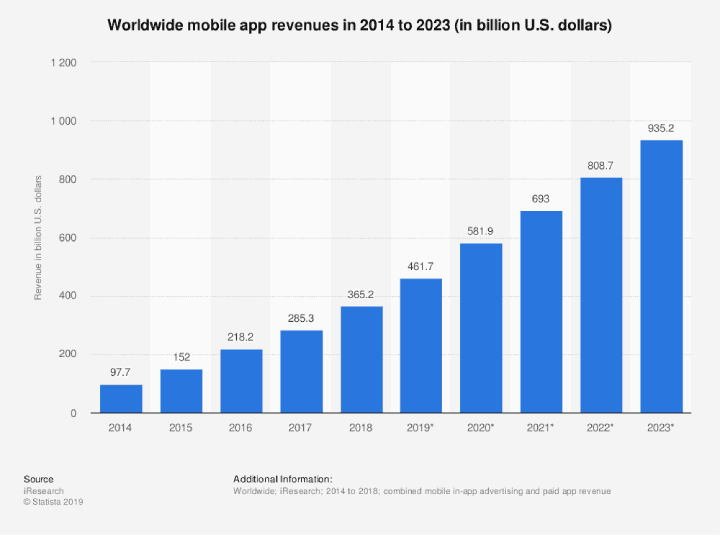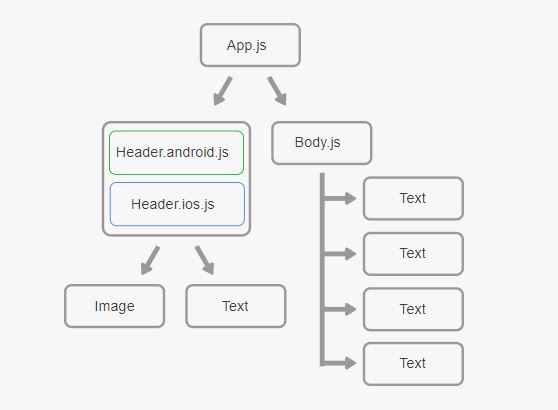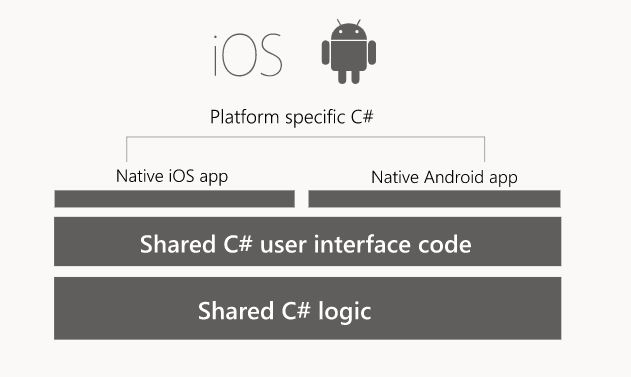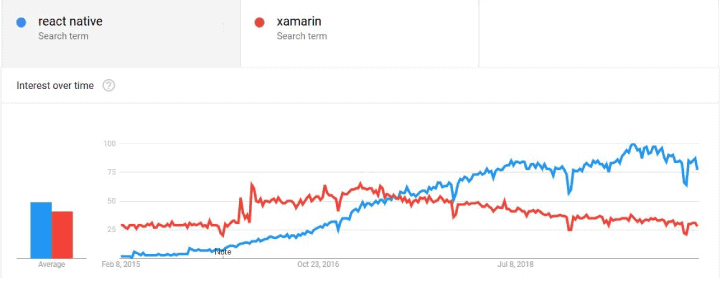
Most brands focus on cross-platform app development, ensuring that app development takes place on the right platform. According to Statista, by 2020, mobile apps are predicted to generate $581.9 billion in global revenue via paid downloads and in-app advertising. With multiple options available in the market, we explore two popular ones: Xamarin vs React Native, and help you choose the best one.
React Native was created by Facebook. It is open-source and targets applications for Android, iOS, Web, and UQP. It started as Facebook’s internal Hackathon project and was first previewed in 2015 at ReactJS Con. React Native is written in JavaScript and rendered with native code. React’s components also allow it to wrap existing native code and interact with native APIs via the software’s declarative JavaScript and UI paradigm.
Founded in 2011 and later acquired by Microsoft, Xamarin is one of the most popular platforms for developing cross-platform apps. The software was developed by the same engineers that developed Mono – a free and open-source .Net Framework. Xamarin allows developers to target Android, iOS, and Windows via a single, shared codebase.
React Native: An open-source framework for building native apps.
A comparatively newer platform for app development, it has gained massive popularity within a limited time. React Native has boasted solid community support and a good market share since its introduction. According to the Github Repository Statistics, in February 2019, 2,058 contributors committed 19 311 times in 108 branches with 335 releases. In addition, React Native is also the 14th most-starred repository on GitHub.
What are the advantages of React Native?
1) A large community of developers
What started as a Hackathon effort in 2013 resulted in React Native. Facebook developed a framework that the development community constantly supported and pushed forward. Additionally, since React Native is an open-source JavaScript platform, it makes it easier for every developer to contribute for free. Also, it is easily accessible to all, giving the community a complete advantage. If you’re stuck, the community will always be there to help.
2) Cross-platform compatibility
One of the most significant advantages of React Native is its cross-platform compatibility. It was initially introduced only for iOS but quickly developed for Android, owing to its beautiful capabilities and features. Most of the APIs are now cross-platform, enabling developers to build cross-platform apps simultaneously via the same codebase.
Image Credit: GitHub
3) Known for optimal performance
React Native has a true advantage in improving performance via native control and modules. The platform gets connected to its native components that help in operating systems and generating code to the native APIs freely and upfront.
4) Affirmative developer experience
One of the most positive things about React Native is the fact that it offers a great development environment. It grants implementations and modifications required while an app runs, removing the need to restart. It also makes the iteration cycle easier by removing the tiring re-building and deploying. React Native also deploys Flexbox layout, an engine that essentially helps generate app layouts for cross-platforms. Thereby helping you understand one layout that works on both platforms.
What are the disadvantages of React Native?
1) It’s still new
As opposed to other Android and iOS languages, React Native is still comparatively new. The programming language still has a lot it can do, especially in terms of improvement. It constantly lacks consistency, especially regarding new updates, which unfortunately confuses developers. These updates especially become a problem because every time a new update is released, the developers find it challenging to make changes and make regular updates.
2) Lack of custom modules
React Native is still underdeveloped as it lacks specific components. While most of the customer modules are readily available and work well, it happens now, and then that one must build a solution from scratch.
3) Limited third-party components
While React Native has a large number of native modules available for both Android and iOS, however, one of the limitations of this tool is the limited number of third-party components available. This is a disadvantage because it limits the possible features that developers may implement in apps.
Apps built using React Native
- Uber Eats
- Tesla
- Skype
- Walmart
Also Read:
9 most popular mobile apps built with React Native
Xamarin: An app platform for building Android and iOS apps
One of the most popular platforms for cross-platform app development in the market has Xamarin. It is an open-source platform and can be used to develop apps via .NET and C#. Xamarin community, with time, has grown to 1.4M developers across 120 countries. Many companies also prefer Xamarin in various fields, such as energy, transport, healthcare, etc.
What are the advantages of Xamarin?
Image Credit: Microsft
1) API integration
Xamarin combines the same APIs and UI controls required to build Android and iOS apps in their languages. Xamarin, and Microsoft Visual Studio, can develop apps for Windows Phone and desktop. Code-sharing is easier b/w these multiple platforms, and getting support isn’t a task.
2) C#
Xamarin allows a developer to write the apps in C#. C# is a highly modern, simple, general-purpose, object-oriented language. It prevents error and is a preferred language for a lot of developers. It is also a popular language. Xamarin allows code written in C# to be easily ported to Android or iOS apps.
3) Effective offline applications
Xamarin is a brilliant tool that allows developers to create mobile applications that function flawlessly without internet connections. This especially helps when the app has a target audience that may not always have good internet access.
4) Testing environment
While most languages allow you to test your code after its completion, Xamarin allows you to test apps while developing them. This results in an error-free and flawless code.
What are the disadvantages of Xamarin?
1) Software overhead
Owing to one of its most significant advantages, Xamarin helps save time by making a single app for all possible platforms. However, despite this, it requires code linkage and putting references between the target operating systems of devices. This increases the time taken for downloads and initiation of apps.
2) Pricing
While Xamarin is a free and open-source language, commercial development and licensing are usually expensive. The annual fees for Microsoft IDE aren’t usually a problem for a professional development company but must be considered, especially with in-house development.
3) Community
Xamarin has a limited community compared to platform-specific languages due to the lack of cross-platform developers. Many developers focus on specializations; hence, the overall community for Xamarin is limited.
Apps built using Xamarin
- Insightly
- Alaska Airlines
- Vanderlande
- FareBoom
- FreshDirect
- The World Bank
React Native vs. Xamarin: Understand the difference
While both may seem like the right kind of choice for cross-platform app development, there are differences between the two:
1) Market share and availability
React Native is the most wanted framework with 13.1% votes, while Xamarin has 4.9%. However, the availability becomes almost identical since both are open-source and available for Android and iOS platforms. What essentially differs is the community.
React Native is undeniably the winner regarding availability because it’s an open-source JavaScript framework and is available across both iOS and Android platforms. Also, the number of search queries on Google about React Native has increased over the last few years.
2) Community support
React Native gets solid support from its community and is quite significant in number. The material is available in case of any problems in React Native; however, since it’s comparatively new, the availability of exclusive tools, tips, etc., becomes limited. Rest assured; it is growing every day.
For Xamarin, community support of around 1.4 million developers is available, meaning support, tips, tricks, tools, etc., are accessible. Besides community support, Microsoft also provides courses to learn the language.
3) Code compilation
React Native requires you to write the code in JavaScript, whereas Xamarin needs to write the code in C#. React Native allows you to formulate your app code into independent blocks. This ensures flexibility, thereby making it easier to upgrade the application. React Native also uses JIT (Just-in-time) compilation, in particular for app development for Android. However, for iOS apps, JS Code needs to be directly interpreted because of restrictions by Apple on the execution of dynamically generated codes on its devices.
However, in the case of Xamarin, C# uses JIT for Android and AOT (Ahead-of-time) compiler for iOS for compiling managed codes. The AOT compiler is substantially better than JIT; hence Xamarin is the ideal choice for iOS and Android developers.
4) Cost
Both frameworks are open-source and free, but Xamarin is accessible only to individuals and small companies. For larger companies and enterprises, licenses start at $999 and can go up to $1899 annually.
5) Development environment
React Native is flexible in the development environment, allowing developers to use the text editor & IDE of their preference and choice. One of the best features in React Native is the Live Reload feature which allows developers to see the changes made to the code in real-time.
Xamarin app development” has a friendlier development environment because it allows developers to write code on Windows. The same code can be compiled on a Mac as Apple doesn’t allow developers to do so any other way.
React Native vs. Xamarin: Which one is better?
While the best choice for you depends on various factors, React Native app development is an excellent overall choice. In today’s scenario, React Native has steady growth, flawless code structure, and brilliant and extensive community support. We suggest from React Native vs Xamarin; you go for React Native for your next project because of its outstanding support from developers, easy availability, and cost-effectiveness.







